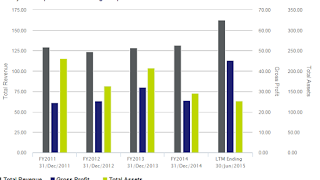The
Reserve Bank of India (RBI), in its fifth Bi-monthly Monetary Policy
Statement for 2015-16, has decided to keep the repo rate same, with no
pulls or pressure from the market. Governor Raghuram Rajan declared that
the Repo Rate will be maintained at 6.75%, with CRR at 4%. Reverse Repo
Rate is held at 5.75%.
RBI in an official statement
said, "Since the fourth bi-monthly statement of September 2015, global
growth continues to be weak. Global trade has slowed further with waning
demand and oversupply in several primary commodities and industrial
materials. In the United States, inventory accumulation is likely to
hold down growth in Q4 of 2015. Industrial production slumped in October
on cutbacks in oil drilling, while exports were undermined by the
strengthening US dollar. Consumer confidence was, however, supported by
the diminishing slack in the labour market. In the Euro area, high
frequency indicators such as retail sales, purchasing managers’ indices
and unemployment point to an uptick in a still anaemic recovery, with
monetary policy expected to be increasingly supportive as risks of
undershooting the inflation target persist. In China, slowing nominal
GDP growth and high debt continue to raise concerns, especially given
the overcapacity in certain sectors. Other emerging market economies
(EMEs) continue to face headwinds from domestic structural constraints,
shrinking trade volumes and depressed commodity prices."
It
added, "The Reserve Bank assessed that the inflation target for January
2016 at 6 per cent was within reach. Accordingly, it front-loaded its
policy action in response to weak domestic and global demand that were
holding back investment, while noting that structural reforms and
productivity improvements would continue to provide the main impetus for
sustainable growth."
The Indian central bank has cut
policy rates by a cumulative 125 basis points this calendar year, and
surprised markets and analysts with a sharp 50 basis points rate cut in
the last rate review.
India’s central bank has managed
to tame inflation down to manageable levels and the price gauge has
remained within its comfort zone for several months now. In fact,
wholesale price inflation has consistently been in the deflationary
territory. Retail inflation saw an uptick to 5 per cent in October,
which was a four-month high, rising from 4.41 per cent in September.
That did raised a few eyebrows as did the reports about a drop in rabi
crop output and a sharp rise in the prices of pulses, which are likely
to put pressure on food price inflation. Yet, the comforting factor is
that the retail inflation number remains below RBI's January 2016 target
of 6 per cent.
The Reserve Bank will shortly finalise
the methodology for determining the base rate based on the marginal cost
of funds, which all banks will move to. The Government is examining
linking small savings interest rates to market interest rates. These
moves should further help transmission of policy rates into lending
rates. In addition, the on-going clean-up of bank balance sheets will
help create room for fresh lending. The Reserve Bank will use the space
for further accommodation, when available, while keeping the economy
anchored to the projected disinflation path that should take inflation
down to 5 per cent by March 2017.
The sixth bi-monthly monetary policy statement will be announced on Tuesday, February 2, 2016.
 STI came off from
its weekly peak of 2857.39 and low of 2831.10 this week and it keep
on rising in 4 consecutive working days in this week which brought
which recovered the fall on the opening at the starting of this week
on Monday. Wall Street's sudden slump on Thursday suggests that
markets are still locked in monetary expansion mode, preferring rates
to remain depressed. the impact here was
rises for the Straits Times Index before and immediately after the
FOMC meeting.
STI came off from
its weekly peak of 2857.39 and low of 2831.10 this week and it keep
on rising in 4 consecutive working days in this week which brought
which recovered the fall on the opening at the starting of this week
on Monday. Wall Street's sudden slump on Thursday suggests that
markets are still locked in monetary expansion mode, preferring rates
to remain depressed. the impact here was
rises for the Straits Times Index before and immediately after the
FOMC meeting.





























